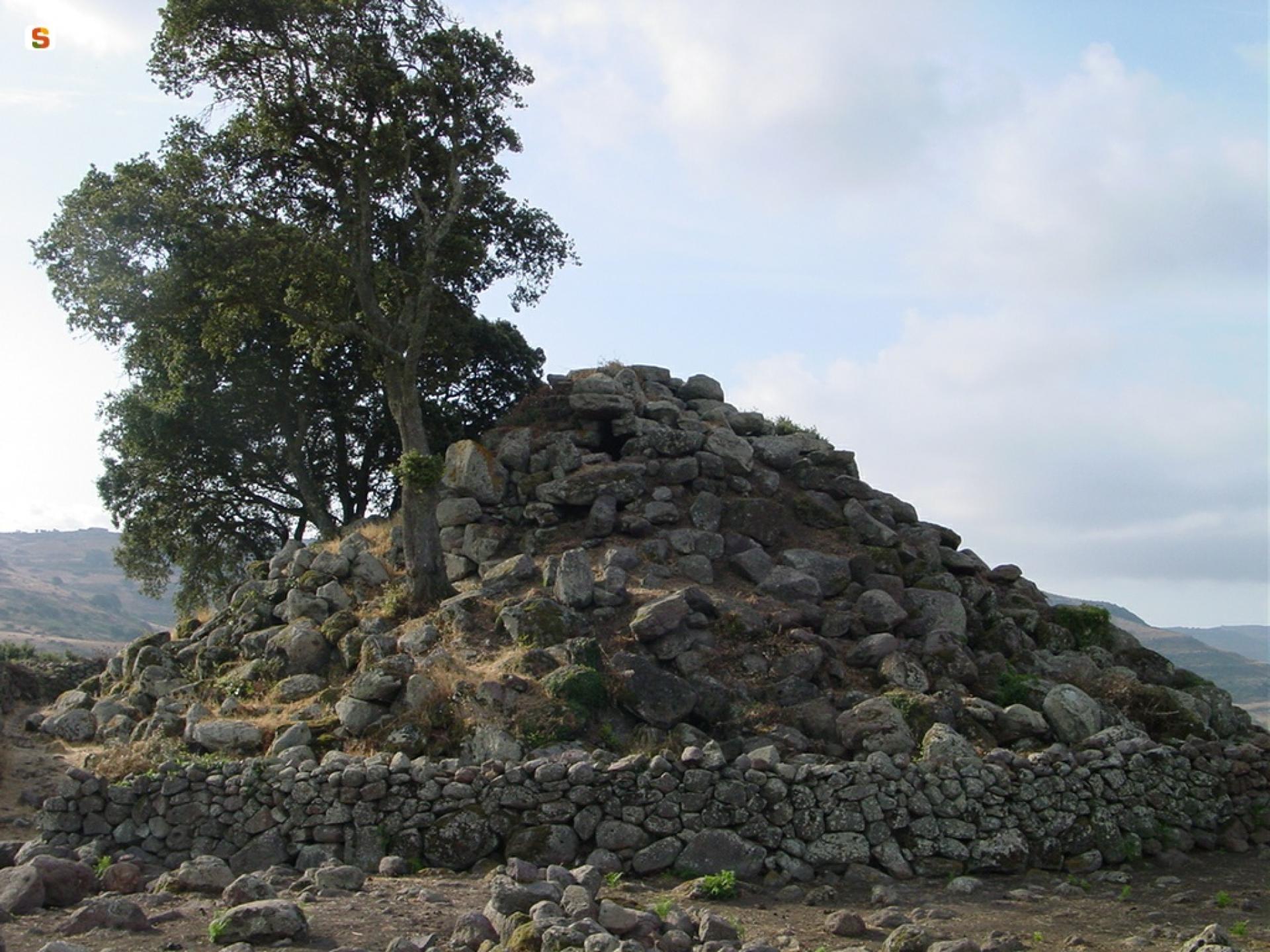A collapse had hidden its forms and protected its secrets, but following restoration and consolidation work, the Nuraghe Appiu has revealed its uniqueness (at least for now): its courtyard, the space between the central tower (or keep) and the bastion, is covered. The only small opening is in the upper part, designed to filter light and, probably, to allow smoke to escape when fires were lit. Who knows, however, what further surprises this fortress might hide, as many areas still need to be investigated.
The nuraghe stands in the countryside of Villanova Monteleone, facing the sea, at the foot of Mount Cuccu, precisely on the summit of a plateau called Chentu Mannas, which dominates the coastal strip between the protected areas of Capo Marargiu and Capo Caccia. The building is quadrilobate, with straight curtain walls connecting to the corner towers using precisely worked L-shaped blocks.
The main entrance will lead you to the covered courtyard, from which various openings lead to the keep and the side towers. The central tower is 15 meters high, and you can observe the tholos roofs of two superimposed chambers. Besides the Appiu, the complex includes a village of 200 huts, another single-tower nuraghe, a Giants' Tomb, two small dolmens, and, not far away, a megalithic enclosure with a megaron temple. The huts studied so far show a block-like layout, arranged around a central courtyard. The rooms must have served various purposes, as they appear structured into multiple internal areas separated by slabs and with niches, while hearths were placed laterally.
The materials found during the excavations also demonstrate the various activities carried out and the vitality of the settlement: grinding stones, sharpening stones, mortars, flint and obsidian flakes, bronze sickles, askos vessels, cooking pots, spindles, and loom weights. Their conformation dates the settlement to the early Iron Age, between the 10th and 9th centuries BC. In addition to dwellings, the huts were most likely also warehouses and craft workshops.
The single-tower nuraghe is called Punta 'e su Crabile and features a single chamber with a residual height of three and a half meters. In front of it are the two dolmens. Between the two nuraghes, within a cork oak grove, stands the Giants' Tomb: you'll notice the rectangular apsidal tomb body and one of the arms of the semicircular exedra. The archaeological park is surrounded by green oaks and holm oaks, with mountains almost precipitously overlooking the sea. You can continue your archaeological tour in the territory of Villanova Monteleone by taking a further leap back in time, to the Puttu Codinu necropolis, where you can admire nine hypogeal tombs with sacred symbols and archaic decorations carved into their walls.
Source : SardegnaTurismo.it

